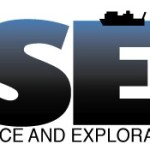 The National Research Council (NRC) released the first-ever Decadal Survey of Ocean Sciences(DSOS) report on 23 January 2015 as commissioned by the National Science Foundation’s (NSF) Division of Ocean Sciences (OCE). The 147 page report looks toward the past ocean science, suggests research priorities for the next decade, and boldly makes recommendations on funding and infrastructure. The boldest of these is the recommendation to reduce funding of infrastructure and increase funding of core funding. To clarify, infrastructure includes the U.S. research fleet, the submersible Alvin, ocean observatory networks, and the ocean drilling program. While the core funding is the money that goes directly to individual researchers and research teams through grants to conduct science.
The National Research Council (NRC) released the first-ever Decadal Survey of Ocean Sciences(DSOS) report on 23 January 2015 as commissioned by the National Science Foundation’s (NSF) Division of Ocean Sciences (OCE). The 147 page report looks toward the past ocean science, suggests research priorities for the next decade, and boldly makes recommendations on funding and infrastructure. The boldest of these is the recommendation to reduce funding of infrastructure and increase funding of core funding. To clarify, infrastructure includes the U.S. research fleet, the submersible Alvin, ocean observatory networks, and the ocean drilling program. While the core funding is the money that goes directly to individual researchers and research teams through grants to conduct science.
In order to sustain a robust ocean science community, holistic fiscal planning is necessary to maintain a balance of investments between core research programs and infrastructure. To maintain a resolute focus on sustaining core research programs during flat or declining budgets, infrastructure expenses should not be allowed to escalate at the expense of core research programs…[NSF Ocean Sciences] should strive to reduce the costs of its major infrastructure and restore funding to core science…within the next five years…[NSF Ocean Sciences] should initiate an immediate 10% reduction in major infrastructure costs in their next budget, followed by an additional 10-20% decrease over the following five years. Cost savings should be applied directly to strengthening the core science programs, investing in technology development, and funding substantive partnerships to address the decadal science priorities, with the ultimate goal of achieving a rebalancing of major infrastructure costs to core science funding within the next five years.
I could not agree more with this recommendation. Over the last decade, only 80% of available ship days were supported through funding. Over the last few years the gap has increasingly widened. Why?

In order to use a research vessel, a scientists largely needs to have a grant funded by the National Science Foundation (NSF) to support the salaries, supplies, travel, and equipment required to conduct science. Ship time is requested but not included in the budget. If a grant is funded then NSF provides the necessary ship days through an arrangement with UNOLS (the U.S. Research Fleet). The problem is that NSF is on average only funding scientists, no matter the research area, at rates less than 5% and in some areas this is closer to 3%. When I wrote my first grant in 2000 the rates were closer to 15-20%. With less grants funded less scientists are doing research and requiring ship time and the infrastructure.
However, the report falls considerably and disappointedly short in addressing the proverbial 300-pound elephant in the room.
the committee was asked to assume that the [NSF Ocean Science] budget is unlikely to grow significantly over the next decade, and given that cost inflation will continue at recent historical rates (~2%/year)
Across the board NSF funding as remained stable or declined, especially in the face of inflation. This is problem is exacerbated with an overall larger research community (because universities/departments measure success on how many Ph.D. students they graduate annually) and increasing percentages of university cuts. The last requires further explanation. Universities tack on an additional percentage (indirect costs) to every grant to cover university administration and infrastructure. The reasoning is the funds provide the equipment, buildings, and salaries of the administrative and facilities personnel to support the researcher. In 2000 this percentage was near 20-25% of the total grant request. Now most universities are over 50% and in extreme cases are well over 75%. This is a problem at the National Institute of health as well.
Overhead payments to universities conducting federally sponsored medical research have been increasing faster than grant values, cutting the efficiency of taxpayer support for scientific discovery, Congressional auditors warned last week.
Because of a lack of transparency about how these funds are actually spent, most researchers have concerns about these increases. Perhaps rightly so. Federal auditors also think universities are over charging.
My recommendation: Any discussion of the funding of ocean science must tackle systemic and institutionalized practices within universities on the spending of grant dollars and growth of graduate programs.
In part, scientists are really discussing how to disperse bread crumbs among us all. In general, science in the U.S. is poorly funded; while the total number of dollars spent here is large, we only rank 6th in world in the proportion of gross domestic product invested into research. Yet, 85% of Americans express concerns about stagnant research funding and 77% feel we are losing our edge in science.
My recommendation: An increased federal commitment to funding science.
Yeah it’s that simple. There is much to be gained from increased funding for science Every dollar we commit to science returns $2.21 in goods and services. Meeting the scientific, technological, logistical, and administrative demands of scientific exploration creates jobs and requires substantial personnel beyond just scientists and engineers. The materials purchased for this cause support even further employment and economic growth. Meeting scientific challenges will also disseminate ideas, knowledge, applications, and technology to the rest of society. This knowledge gained from basic research will form the backbone for applied research and economic gain later.
Overall, we need a major restructuring in how much we fund science, including ocean science, and how we spend those hard won dollars.






